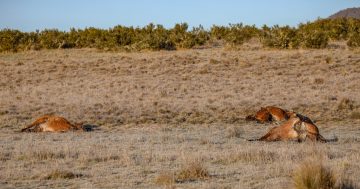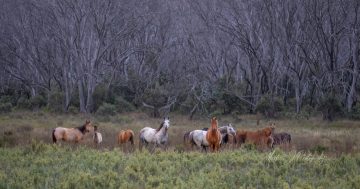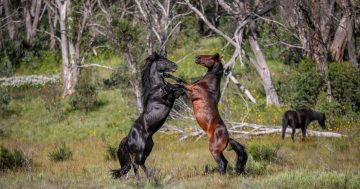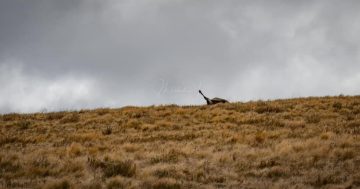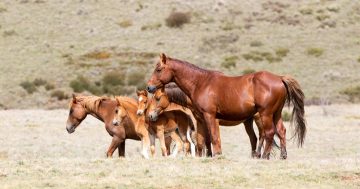
Brumbies captured post-fire by Cooma photographer Michelle Brown. Photo: Michelle J Photography.
NSW Minister for Environment Matt Kean hs announced that brumby numbers in Kosciusko National Park will be reduced substantially, with as many as 4,000 out of an estimated total of 20,000 horses due to be rehomed or culled.
The move comes as a bushfire recovery measure, with a NSW Government spokesperson confirming that advice from the Community Advisory Panel and the Science Advisory Panel “supports the need for urgent post-bushfire action to control horses in the sensitive areas of Kosciuszko National Park, which is necessary to protect the environment as it recovers from the fire”.
Approximately 57,000 ha have been prioritised for control in three northern parts of the park, including Nungar Plain, Cooleman Plain, and parts of Boggy and Kiandra Plains.
“These areas contain a range of values including threatened species and sensitive ecological communities which are most vulnerable to trampling and other impacts of horses. They also include areas with a high risk of collision between horses and vehicles. This will not have a significant impact on areas where horses have heritage value and are likely to be retained under long-term management of the park,” the spokesperson says.
But not everyone agrees with the measures, with locals arguing that more horses died in the fires or were humanely euthanised by National Parks staff the immediate aftermath than has been publically acknowledged.
“National Parks have not released how many horses were euthanised after the fires,” says Cooma resident and photographer Michelle Brown of Michelle J Photography.
“As far as we know, counts are taken every five years and the last aerial count was taken in 2019. We want a post-fire brumby count and we want it now. I don’t think there’s a total of 4,000 horses in the whole park after the fire, let alone the 20,000 the government is claiming are there.”
Brown reports seeing many dead horses on her frequent visits to the park after the fire.
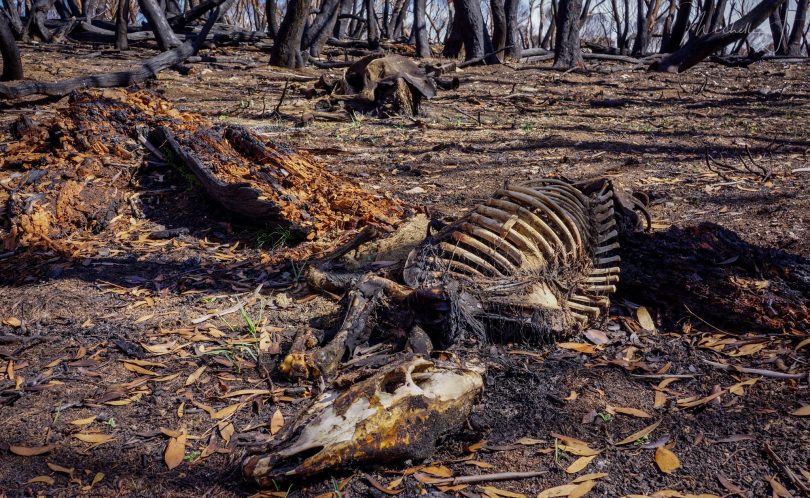
Cooma photographer and brumby advocate Michelle Brown took photos of some of the horses which died in the fires. Photo: Michelle J Photography.
“I’ve gone into the park on foot two to three times a week since the fires and I’d estimate there are between 2,500 and 3,200 horses in the whole park.”
According to Brown, the fact that the horses move around so much means that horses from surrounding nature reserves like Jingellic Nature Reserve, Bogandyera Nature Reserve and Clarkes Hill Nature Reserve were counted as being part of the Kosciusko population.
While not an official count, members of the Invasive Species Council, along with ANU Environment Professor Jamie Pittock, flew over burnt areas of the park in late January and took footage of mobs of horses grazing on the first green shoots on open plains.
“The picture is becoming clearer as photos and video emerge from Kosciuszko National Park showing threatened species habitat hit hard while the 20,000 strong population of feral horses have largely been unscathed,” Professor Pittock says.
“Australia’s plants did not evolve to withstand trampling by hard-hooved animals or their intensive grazing.”
Invasive Species Council CEO Andrew Cox is concerned about the concentration of brumbies in unburnt areas of the park.
“The fires that burnt 35 per cent of the park appear to have pushed the horses into a more concentrated area, increasing the trampling of wetlands, habitat of critically endangered species like the northern corroboree frog and the stocky galaxias fish.
“Horses are also returning to burnt areas following the recent rains. This will cause irreparable damage to burnt peat bogs and recovering alpine and sub-alpine vegetation.”
Brown argues that the environment has adapted to having brumbies as part of the ecosystem.
“The numbers are flawed, they’ve been flawed for years, these horses have been in this environment for 180 years, they are part of it now and they are part of our heritage. I’m appalled, it’s got to stop, this mentality to just kill everything.”
She invites anyone who doubts the numbers to come out on foot with her and see how many horses died in the fires and to see that the brumbies don’t need to be culled for humane reasons.
“The horses are fine, they are not starving, the treeline is burnt out but the plains are recovering and green. They have plenty of feed and so do all the other animals,” she says.
Original Article published by Elka Wood on About Regional.












